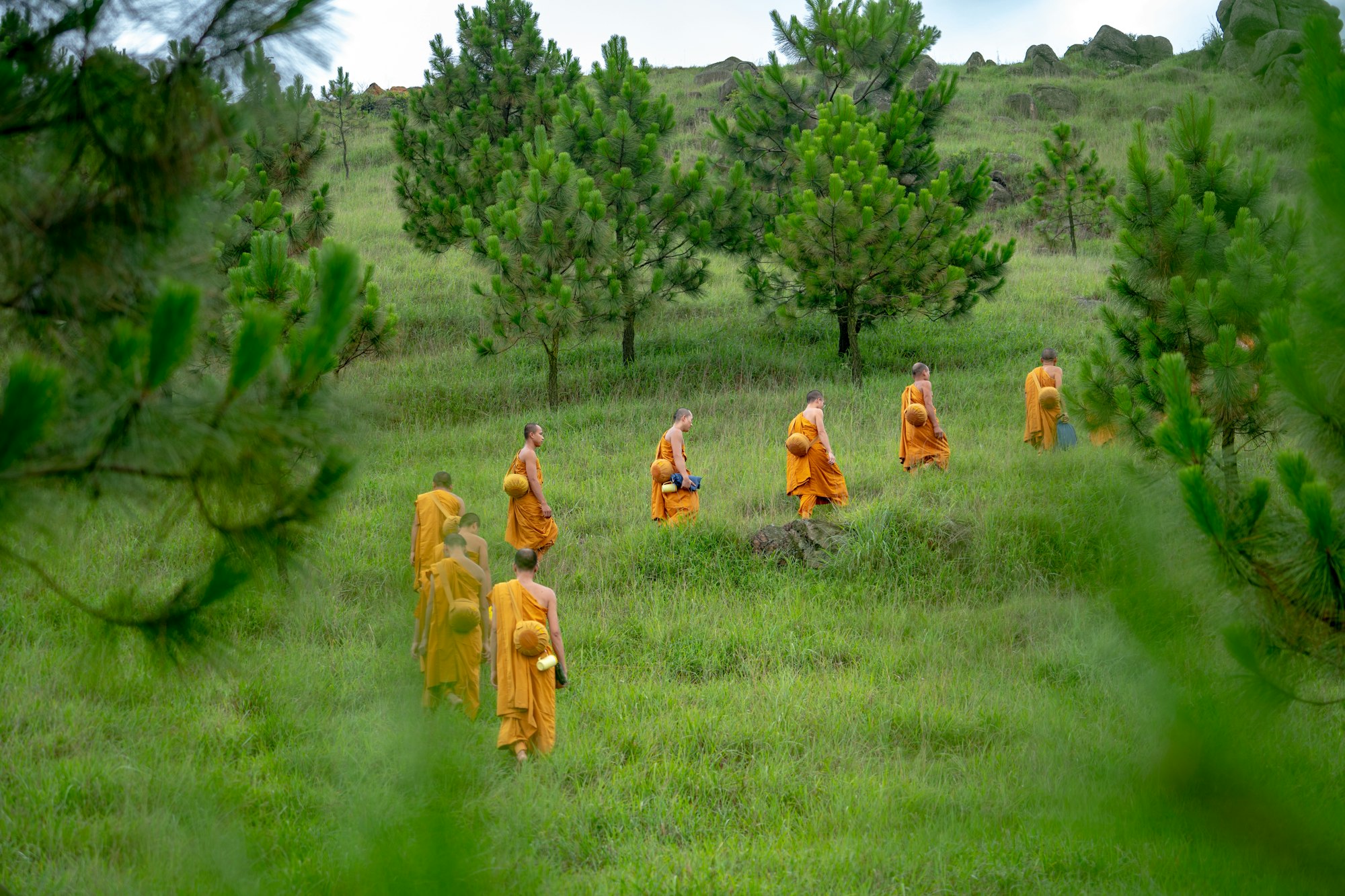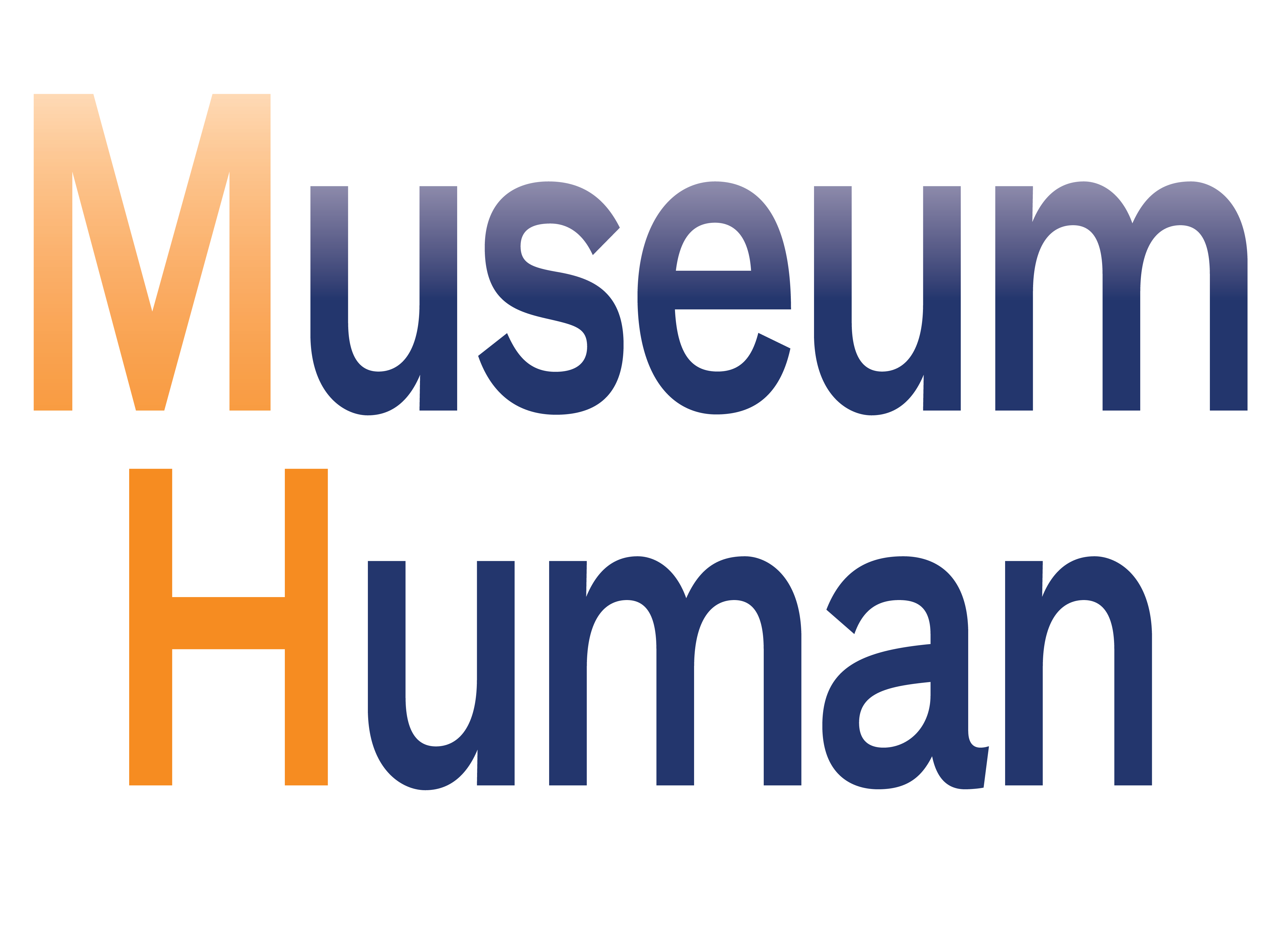Tech isn't helping museums' problems with alternate realities.
I've long claimed that the greatest problem in museums is the lack of shared vision, values, culture, and ideas. I don't mean to say that different groups in the museum can't have different opinions about what's important—but we have to at least acknowledge this gap or chasm and recognize when these values have to align beyond just getting an exhibition mounted, a book published, or a program held.
We can consider two ways that multiple universes get described: cinematic or scientific. The movie approach to the multiverse, as seen in Doctor Strange and the Multiverse of Madness and Loki, involves adjacent alternative universes (or timelines, which aren't completely interchangeable) with variations on the setting, events, and even characters. (For us museum folks, I once asked, in The Museum at the End of the World: Alternate Timeline Edition, what you might have done differently had you not gone into this field; a more expanded vision might ask, what might you have done if there weren't any museums at all?)
One hard-sci-fi approach I've mentioned before is from Greg Egan in his novel Diaspora, in which refugees (who have left their bodies centuries earlier for existences in a pre-Zuckerbergian version of the metaverse) from Earth, destroyed by an unexpected and unexplained cosmic disaster, leave our four-dimensional spacetime universe for one higher dimension after another in a quest to locate transcendent beings who may have knowledge of what befell their long dead planet.
Without delving too deep into the speculative science and mathematics of the novel, the many universes of Diaspora touch each other in many dimensions and pull on each other ever so slightly, but are otherwise invisible to each other. It reminds me a bit of my thoughts about liberation.
Getting back to better-established (or perhaps less speculative) ideas about the multiverse, there's the increasingly-held idea that cosmic inflation, which expanded spacetime leading up to the big bang, leads to our universe being merely a part of a greater whole, with other regions of spacetime beyond our visible horizon, expanding further away with time.
Why the extended metaphor? And what does it have to do with museums and tech? The promise of the early internet (beyond its DARPA-commissioned military applications) was the bridging of distance and sharing of information. Well, all it took was a few trillion corporate dollars aimed at the tech industry and the continued buying of attention, and not-so-suddenly we have a real problem. Tech may be pulling us away from each other, beyond our visible horizons, where we only affect each other in infinitesimal ways.
So as you read these links, consider the atomizing effect of tech on our collective ability to act, consider, and align.
One: Wired magazine has an article here on how Silicon Valley—not just its products but its worldview—has become a part of any reason-versus-faith-discussion of modern life. It's an interesting thought for museum workers who regularly get caught in "let's think this through" versus "this is just the way it is here" debates about policies and processes. (There's a lot of this in remote/hybrid discussion as well.) The article states:
It is hard to escape the utilitarian logic of Silicon Valley, and we lie to ourselves when we rationalize our motivations. The most interesting thing about the cryptocurrency craze was the ubiquity of “white papers”—the framing of every new product in purely rational terms, or the need to present it as a product of Athens. And then there was Dogecoin.
We’re not living in a world of pure reason or religious enchantment, but something entirely new.
Reason, religion, and the technology-driven quest to create value at any cost are now interacting in ways we scarcely understand, but which have vast influence over our everyday lives. Our two-decades-long experiment with social media has already shown the extent to which reason, or Athens, is being flooded with so much content that many have referred to it as a post-truth environment. Some social psychologists, like Jonathan Haidt, believe it’s making us crazy and undermining our democracy. Humanity is at a crossroads. We are trying to reconcile various needs—for rationality, for worship, for productivity—and the tension of this pursuit shows up in the things we create. Because the three cities are interacting, we are now living with technology-mediated religion (online church services) and technology-mediated reason (280-character Twitter debates); religiously adopted technology (bitcoin) and religiously observed reason (Covid-19 cathedrals of safety); rational religion (effective altruism) and “rational” technology (3D-printed assisted-suicide pods).
Two: This article on museums and Gen Z isn't just about tech, but at least half of any "how to get more people into museums" discussion leads to a digital approach. It's aligned with the "go to the people where they are" take on engagement and visitorship, which I've said misses the point of spreading digital strategy around our institutions. It's another instance of museum multiverses, this time among audiences and workers.
Three and Four: Douglas Rushkoff finished his four-part Medium series on "digital distributism" here and here, and it's worth considering if his long quest for a more humane internet (he's been writing about digital culture since its early days) can ever overcome 1) our capitalist society's need to exploit any resource (Rushkoff's latest book, about billionaires—often from the tech world—who are desperately seeking to survive the very apocalypse they've foisted on our planet is described deliciously by Cory Doctorow here in Medium) and 2) the soft-connection nature of social media itself. As Doctorow writes:
Rushkoff’s key insight is that the wealthiest, most powerful people in the world understand on a deep level that the way they live has a good chance of causing civilizational collapse, mass die-offs, and terminally poison the only planet in the universe known to be capable of supporting human life.
They understand this, but they’ve made a virtue of it. Our society, our lives, and our planet are viewed as the booster stage of a rocket — a disposable thruster made to get us into orbit before it is discarded. We might wipe out our planet and civilization, but they can retreat to islands. Or orbit. Or Mars. Or the metaverse.
Rushkoff is a philosopher and media theorist, and Survival is an inquiry into the origins of this bizarre and suicidal impulse, asking how psychedelics, cybernetics, and techno-liberation movements could have resulted in this bizarre embrace of the end of the world.
The book revisits the touchstones of the tech world — Burning Man, the MIT Media Lab, Wired Magazine, John Brockman’s star-studded “Edge” salons, TED talks — and shows how each contributed in its own way to “The Mindset” — the ideology of the rich preppers.
Rushkoff doesn’t condemn all of this — he’s a product of it, as am I. Rather, he’s interested in how a movement that was once filled with people who decried greed and hubris incubated a movement that lionizes both. For Rushkoff, much of the blame can be traced to the “scientism” of materialism without ethics, the idea that the universe has no moral arc and any attempt to declare a morality is sentiment or cynical manipulation.
I’m a pretty staunch materialist myself, and so some of this made for uncomfortable reading (Rushkoff is an old friend and we’re scheduled to appear on stage together later this fall to discuss this, and I’m looking forward to it). I think ideology can explain how we act, but I think it’s a mistake to view ideology as a weightless and immaterial thing. Our material circumstances are key to what we believe — and how important those beliefs are to how we live.
But ideology is important, and I agree with Rushkoff that The Mindset is an ideology, and a bad one. I think he’s right that you can trace a line from a nihilistic scientism to Jeffrey Epstein’s plan to breed a race of superhumans by buying a private island and populating it with underage girls who would bear his children.
The private island is key. The Mindset is obsessed with leaving society behind, with creating a private space where the unnecessariat can’t make demands on the moral sentiments of their betters, whether that’s an island, a space colony or a seastead. This project of “libertarian exit” is beautifully documented in Raymond Craib’s book “Adventure Capitalism”: https://pluralistic.net/2022/06/14/this-way-to-the-egress/#terra-nullius
And check out a Rushkoff follow-up post on Medium here:
The catastrophic “event” for which the tech billionaires are preparing — the apocalyptic moment they are envisioning or even fantasizing about — is already occurring. We are soaking in it. It is not a figure, it is the ground.
I’m convinced that being able to read whole books, engage in extended conversations, or sit through whole plays gives us more of a chance to move beyond the frightening figures to the collective ground in which these crises are germinated.
We are not the figures, we never were. We are the landscape. Only a billionaire could convince himself he’s the subject of the story.
How many of us are seeking our own "island" in these times? (Or were all too happy to be on an island in the before times?)
Five: In keeping with the theme of tech (fortunes) enabling the survival of the richest, here's a piece on existing in the cloud (or at least as a sovereign individual outside the purview of normal nation-state-based society), also as per Wired. Yes, tech is tied up with this sense of personal transcendence … the best way of all of escaping a collapsing universe.
Six: If you've been involved in caregiving in the US for any length of time, you know the particular byzantine nightmare of navigating our healthcare system. This article from Harvard Business Review is one of literally thousands about ways to leverage technology to improve health care outcomes (let's give these writers the benefit of the doubt that they really want people to be healthier and not just companies to be richer, though the latter is, of course, plenty desirable). The piece is more remarkable in the detail it delves into to provide more data for better health decision-making. (Yes, there will be wearables.) That's one way to tie our universes together, but does it have to be in the service of data?
Seven: At my institution, The Met, our very own research library has an exhibition—Past/Present/Future: Expanding Indigenous American, Latinx, Hispanic American, Asian American, and Pacific Islander Perspectives in Thomas J. Watson Library—starting soon. There are some excellent examples of non-white-supremacist futurism on display, including a book I really enjoyed released on the occasion of the Diné Navajo dub of the first Star Wars film. Some info about the exhibition:
Past/Present/Future is the culminating exhibition to Thomas J. Watson Library's grant project funded by the National Endowment for the Humanities, which aimed to assess and expand the library's collection of underrepresented heritage groups, especially Indigenous American, Latinx, Hispanic American, Asian American, and Pacific Islander artists. While it is impossible to apply a single definition or category to all the acquired titles, many explore a suspension or intervention of temporality, bound together by shared themes of colonialism, land sovereignty, reclamation, and reconciliation. Thus, the titles selected here present artists whose work confronts the past, reconciles the present, and draws out new possibilities for the future of historically marginalized people in the United States. This selection also mirrors Watson Library's own endeavors to build a diverse body of perspectives and resources dedicated to the study of visual art by confronting what has been overlooked in the past, addressing it in our present moment, and mapping out a future where the collection better aligns with its values and purposes.
The selected titles were gathered together through the joint effort of the project’s research associates and bibliographers Amanda Raquel Dorval, Anna Lee, and Louisa Raitt. Watson Library’s NEH Grant Project ran between October 2021 and December 2022, with catalogers Helice Koffler and Kim Ross; library associates Mia Ciallella, Raymond Lei, and Lo Traster-Lee; and led by Jared Ash, Florence and Herbert Irving Collections Librarian.
If you have an opportunity to visit The Met, make sure to come by Watson Library. It's worth also checking out the Met exhibition Before Yesterday We Could Fly: An Afrofuturist Period Room. Futures are not all white, despite the best attempts of many in this country to make it a predominantly white universe (or PWU?).
Eight: The future, however, may very well be given over to AI. Considering how many HBR articles propose machine learning solutions to various problems like health care delivery, this article suggests that you ask yourself if your org—and you—have enough time to review what your AI is doing. Perhaps one should also ask if the AI is being given the right questions. Who gets to decide what the AI is asked to figure out? (Eventually, I'll have to write a "AI for the Rest of Us" article, no?) Would an AI eventually get around to removing us from "its" universe?
Nine: For people with fond memories of printed maps, this short reminiscence in Medium may inspire a little longing. But, I wonder, is "stumbling around without a map" a privilege? "Quiet quitting" (a lot more on that later) implies not just work-life balance, whatever that is, but a larger balance between "productivity" and humanity, or even a new conception of productivity (and more than just "high-performing teams". These are important questions for museum workers to consider as they are presented with new tech solutions for almost everything. Just what problems are we trying to solve with "more efficient" systems?
Ten: Remembering my recent writing about systems, here's a piece on futures design that reminds us that the future is still relentlessly human. Consider this:
So, how do we design the future? Well, at Boardroom Labs we've been tinkering with our process for some time and it is (and will always be) a work-in-progress. Further, since every engagement or challenge is unique, especially in the realm of wicked problems any process that's too restrictive and narrow will be brittle and misleading. Thus, think of this process as a set of railings on a wide bridge. There are many different approaches you could take to crossing this bridge, but the guardrails help you to cross without falling into the water.
This process is applicable in any context as a futures designer and has been distilled from many different domains and disciplines across the social sciences and changemaking, including:
Ethnography & Anthropology: Exploring people’s innermost thoughts, feelings, beliefs, and contexts.
Strategic Foresight: Surfacing global patterns of change and envisioning bold future possibilities.
Business & Product Management: Bridging today's realities with tomorrow’s possibilities to drive stakeholder value.
Systems Thinking: Making connections and uncovering truths and implications in the bigger picture.
Concept & Service Design: Identifying, validating, and piloting concepts into new or improved products or initiatives.
Storytelling & Brand: Crafting stories, artifacts, and experiences that simplify, engage, and inspire.
Inspired or exhausted? Rolling your eyes or all in? This short Medium piece contrasts different "thinking" approaches, pointing out that any good planning team needs a mix of mindsets. Good systems thinking is older than just postwar org culture trends and, perhaps, even the multiverse.
How does this all get back to museums and tech? Think of ICOM's new definition of our institutions:
A museum is a not-for-profit, permanent institution in the service of society that researches, collects, conserves, interprets and exhibits tangible and intangible heritage. Open to the public, accessible and inclusive, museums foster diversity and sustainability. They operate and communicate ethically, professionally and with the participation of communities, offering varied experiences for education, enjoyment, reflection and knowledge sharing.
Tech isn't mentioned. Of course, you could say that tech is implied throughout, especially in "varied experiences," which now often is taken to mean "immersive." Same with "accessible." But I think a more important term here is "service," and while tech should be in service to people, in this capitalist economy it's usually the other way around. Are we serving bringing our universe together or further splitting it apart?

Liberation
Whom among us doesn't feel that we're working for our museum workplace systems and technologies and not vice versa? The solution isn't as simple as a tech detox any more than a work detox. The intersection of toxic and humane usually defaults to toxic (in math logic terms, perhaps toxicity is an or rather than an and).
Perhaps the liberation we seek lies in this or/and relationship with toxicity and what drives it—namely when we don't treat each other like people (or that our concepts of leadership are derived from not treating other people like people). How can tech amplify human relationships, especially in remote/hybrid times that allow people to be more humane—by not commuting, by being closer to family, by being out of the way of trauma—but also can, in some non-trivial ways, make humane workplace relationships more challenging?
If we want there to be one universe or even a well-connected multiverse, we'll need to spend a little less time wondering where people are digitally and more where people are as people. Where are they their most selves? (A dangerous question for a self-identified, no-self Buddhist, I know. But I'll work with the illusion for the time being.) What are the intersections of these selves among our various museum realities? As I've said before, I'm not pointing fingers at my digital colleagues and not picking a fight with those of you who strongly believe in social media tools. I'm just saying, liberation will not come through tech, especially not in one human-replacing tool after another.
cover photo by Pieter / Unsplash [description: several iridescent soap bubbles with a blurry crowd in the distance]

Links of the Week: September 16, 2022: The Museum Multiverse by Robert J Weisberg is licensed under a Creative Commons Attribution-NonCommercial-ShareAlike 4.0 International License.







